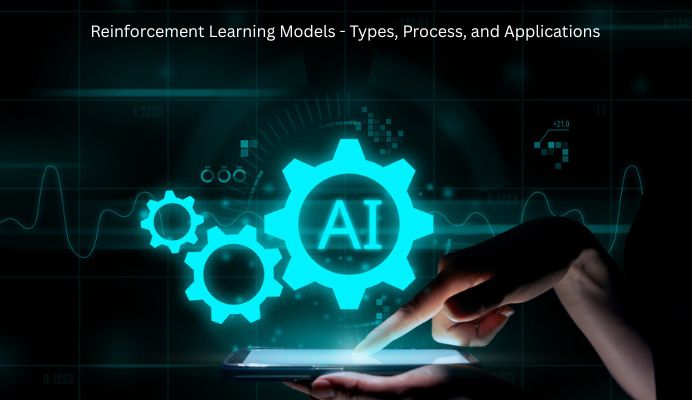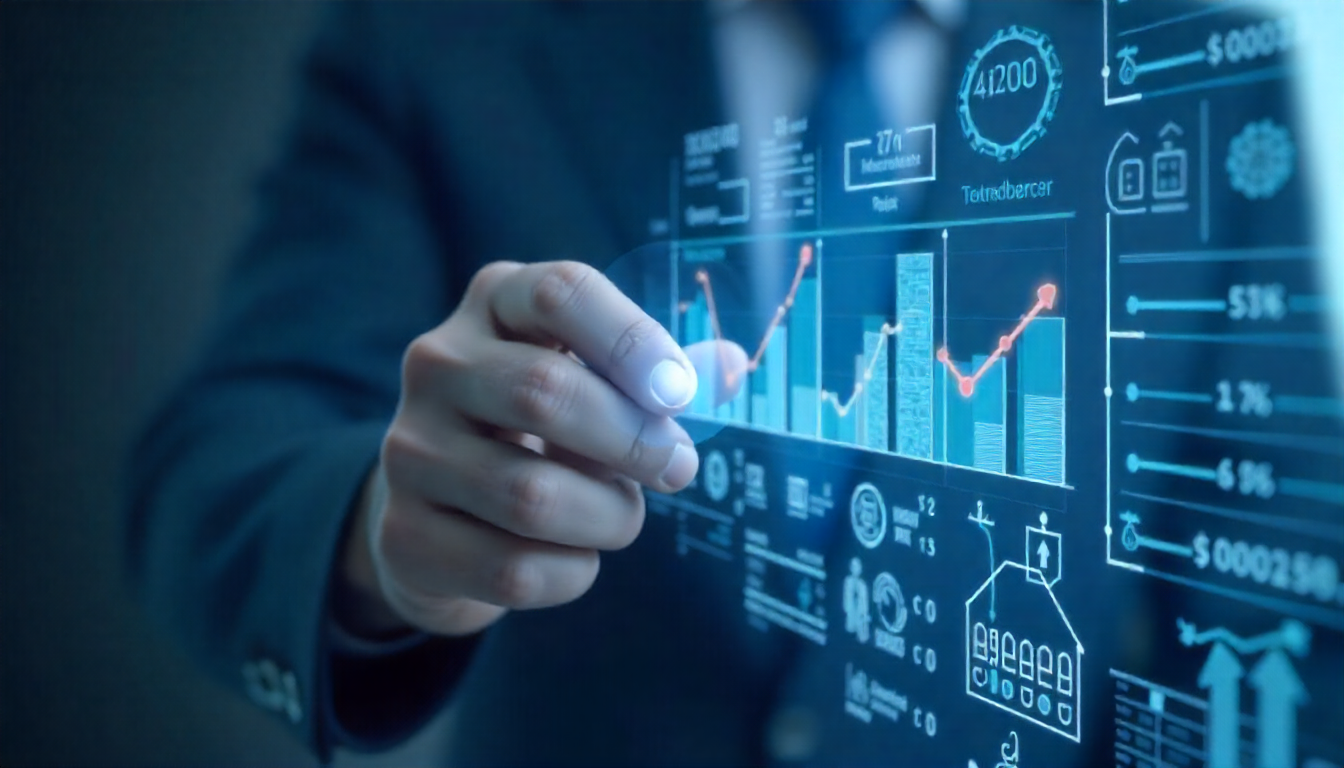
Top 9 Digital Transformation Examples in Industries
Curious about learning the best digital transformation examples?
Digital transformation is a crucial aspect of modern business strategy, as it involves the integration of digital technologies into various aspects of an organization to improve efficiency, enhance customer experiences, and foster innovation.
Digital transformation showcases the power of digital innovation in reshaping industries and driving business transformation. By adopting a successful digital transformation strategy, companies can achieve their digital transformation goals and thrive in the digital age.
Digital transformation in retail
Some of the digital transformation examples in retail include the following
1. Personalised shopping experience
AI technologies and data analytics have made personalized shopping experiences a cornerstone of modern retail. Automating customer service and tailoring interactions based on behavior significantly boosts satisfaction.
IoT-enabled Dash Buttons, digital beacons, and custom mobile apps help retailers tailor shopping experiences to individual preferences, aligning with current market trends. With 73% of consumers favoring personalized experiences, these innovations clearly meet demand and enhance customer satisfaction.
2. Omni-channel integration
Omnichannel integration is essential for enhancing customer engagement by merging online and offline experiences. Companies like Sephora and Disney have successfully created smoother shopper journeys and improved service through such strategies.
Scalable technology adoption integration and cross-business collaboration are critical for leveraging technology to enhance customer experiences and achieve a successful digital transformation strategy and successful digital transformations, fostering continuous innovation.
Digital transformation in healthcare
Let’s learn the key digital transformation examples in healthcare
1. Electronic health records
Electronic health records (EHRs) have revolutionized patient care by enabling quick and efficient access to information. Networked electronic health records improve collaboration among healthcare professionals, enhancing patient coordination and management with real-time data access. This shift has significantly improved the quality of care in healthcare.
2. Telemedicine
Telemedicine enhances healthcare delivery by allowing patients to receive care without geographical constraints. The rise in teleconsultation usage, as reported by AXA, reflects the growing acceptance of virtual healthcare solutions.
Virtual consultations and remote monitoring provide convenient and effective access to healthcare services, bridging gaps in traditional healthcare and enhancing future accessibility and efficiency.
3. AI diagnostics
AI technologies are crucial for early disease detection, helping healthcare professionals diagnose conditions at their inception. AI algorithms analyze medical images and data more accurately and efficiently than traditional methods, leading to timely interventions and better patient outcomes.
Machine learning models identify patterns in patient data, improving diagnostic accuracy and aiding clinicians in making informed decisions.
Digital transformation in banking
Some of the key digital transformation examples in banking include
1. Mobile banking apps
Mobile banking applications have revolutionized financial management, providing anytime, anywhere access that greatly enhances user convenience. These digital solutions empower users to effectively manage their finances with greater flexibility and control. Mobile banking exemplifies how digital innovations can enhance customer experiences in banking.
2. Blockchain technology
Blockchain technology provides a secure foundation for transactions, enhancing banking operations’ security and efficiency. It reduces transaction times and eliminates intermediaries, leading to cost savings and streamlined cross-border payments.
Digital transformation in manufacturing
Let’s look at some of the key digital transformation examples in manufacturing
1. IoT and smart factories
IoT and smart factories are revolutionizing manufacturing by enabling real-time data collection and communication, improving decision-making, and operational efficiency. IoT devices enhance process monitoring and control, while robotic process automation boosts production speed and accuracy by minimizing human error.
2. Robotics and automation
Robotics and automation are integral to manufacturing, significantly boosting production speed and accuracy. Automated systems use robotics and AI to optimize processes with minimal human involvement, resulting in higher efficiency and reduced costs.
These exciting new technologies outperform human labor in many tasks and enhance overall productivity, showcasing new capabilities.
3. Predictive maintenance
Predictive maintenance, using advanced analytics and IoT sensors, anticipates equipment failures and minimizes downtime. This approach can reduce equipment breakdowns by up to 70%, as demonstrated by companies using AI and IoT technologies.
Predicting maintenance needs ensures smoother operations and reduces unexpected disruptions.
Digital Transformation in Education
The education sector is adopting digital transformation to offer an innovative learning management system and enhance accessibility. Let’s look at some of the key digital transformation examples
1. Online learning platforms
E-learning platforms have transformed education by making learning more accessible and convenient. They provide students with flexible opportunities, allowing them to learn at their own pace and accommodate personal and professional commitments.
For educators, e-learning platforms enable innovative teaching methods and offer new ways to engage with students. Digital technologies play a crucial role in these digital transformation initiatives.
2. Virtual classrooms
Virtual classrooms are utilizing virtual reality (VR) technology to create immersive learning experiences that enhance student engagement. VR tools allow students to interact with computer-generated environments, making learning more engaging and interactive.
By integrating VR into classrooms, educators can create immersive learning experiences that fully engage students and enhance their educational journey.
3. Data-driven insights
Educational institutions are increasingly using data analytics to tailor learning experiences to individual student needs. By analyzing data, educators can monitor student progress, intervene in a timely manner, and optimize learning outcomes. This data-driven approach allows for more personalized and effective education, improving both engagement and academic performance.
Digital Transformation in Entertainment
The entertainment industry is undergoing a significant transformation driven by the shift to digital content consumption. Digital technologies are reshaping storytelling, enabling content creators to engage audiences through interactive experiences in the digital age.
1. Streaming services
Streaming services have transformed the media landscape, shifting consumer demand from traditional formats to platforms like Netflix and Disney+. Disney adapted to this change by launching Disney+ and implementing personalized content strategies to engage viewers.
Personalization in streaming services is crucial for tailoring content to individual tastes and enhancing viewer engagement.
2. Interactive content
Augmented Reality (AR) and Virtual Reality (VR) are increasingly used in entertainment to create immersive experiences. These technologies allow users to engage in interactive environments, enhancing their sensory experiences and viewer engagement.
Interactive content formats, including VR concerts, are gaining popularity, further increasing interactivity and viewer engagement in the entertainment industry.
3. AI recommendations
Personalized content recommendations are powered by complex AI algorithms, improving user satisfaction and engagement. These algorithms analyze user preferences and viewing habits, enabling platforms to suggest personalized content tailored to individual tastes.
Streaming services utilize machine learning to continually refine recommendation systems, enhancing user interaction and satisfaction.
Digital Transformation in Agriculture
Digital transformation in agriculture is advancing farming practices, leading to increased efficiency and optimization of resources. Let’s look at some of the key digital transformation examples in agriculture.
1. Precision farming
Precision farming utilizes sensors and data analytics to optimize crop management and resource allocation. This approach allows farmers to gather real-time data and make informed decisions about inputs like fertilizers and water, ultimately enhancing crop yields and resource efficiency.
By leveraging digital technologies, precision farming enables more sustainable and productive agricultural practices.
2. Drones in agriculture
Drones are increasingly utilized in agriculture for monitoring crop health and soil conditions, providing valuable insights for farmers. These devices facilitate real-time monitoring and data collection, enabling timely interventions and informed farming decisions.
By adopting new technologies like drones, the agricultural sector can improve efficiency and optimize resource usage.
3. Automated machinery
Automation in farming machinery significantly reduces labor costs and enhances operational efficiency. Automated machinery can work continuously without breaks, improving productivity and reducing manual labor requirements.
By integrating digital technologies and leveraging AI, automated machinery enables more efficient and cost-effective farming operations.
Digital Transformation in Logistics
Some of the key digital transformation examples in this section include
1. Real-time tracking
Real-time tracking systems are essential in supply chain management, providing immediate visibility into goods’ status during transportation. These systems increase customer satisfaction by providing accurate delivery estimates and allowing companies to monitor operations effectively. Real-time tracking is crucial for digital transformation in transportation and logistics.
2. Autonomous vehicles
Autonomous vehicles, like self-driving trucks and delivery drones, are set to revolutionize logistics by reducing transportation costs and improving efficiency. Advanced sensors, AI, and machine learning ensure safe operation, promising faster fulfillment and new revenue opportunities.
Regulations and infrastructure will shape their integration, but autonomous vehicles represent an exciting advancement in transportation.
3. Route optimisation
Machine learning algorithms transform route optimization by analyzing data streams to suggest more efficient delivery routes. They enhance optimization by considering real-time traffic patterns and other variables, saving time and fuel.
Refining route optimization algorithms allows companies to improve business strategies and enhance service requests, providing a competitive advantage.
Digital Transformation in Energy
The energy sector is leveraging digital transformation to manage complexities arising from increased renewable energy use and electric vehicle integration. Let’s look at some of the key digital transformation examples in the energy sector.
1. Smart grids
Smart grids utilize advanced technologies to connect energy infrastructure, improving visibility and management of daily operations. Technologies such as Energy Management Systems (EMS) and Advanced Distribution Management Systems (ADMS) are essential for effective grid planning and optimization.
By improving the distribution and consumption of electricity, smart grids enhance the reliability and efficiency of energy systems.
2. Renewable energy management
Digital tools play a vital role in managing and optimizing renewable energy sources, particularly through data analytics and real-time monitoring. Smart metering and sensor technologies enhance flexibility, management, and decision-making at the grid edge, which is crucial for integrating renewable energy using digital means.
By optimizing the management of renewable energy sources, these digital tools enable better integration and performance tracking.
3. AI in energy forecasting
AI is increasingly utilized to predict energy demand by analyzing historical consumption data and environmental variables. Machine learning algorithms help forecast energy demand with higher accuracy, allowing energy providers to prepare for fluctuations in consumption.
By optimizing energy supply chains, AI ensures that supply matches expected demand, minimizing waste and contributing to more sustainable energy management practices.
Digital transformation is reshaping industries across the board, from retail and healthcare to manufacturing and agriculture. By embracing digital technologies and innovative strategies, businesses and sectors can improve efficiency, enhance customer experiences, and stay competitive in a rapidly evolving digital world.
The digital transformation examples mentioned above highlight the transformative power of digital innovation and provide valuable insights into the future of various industries.






